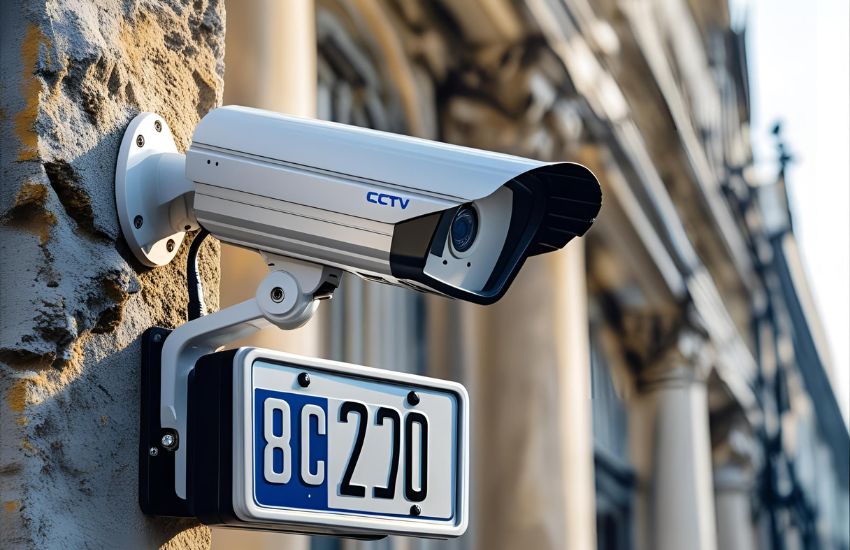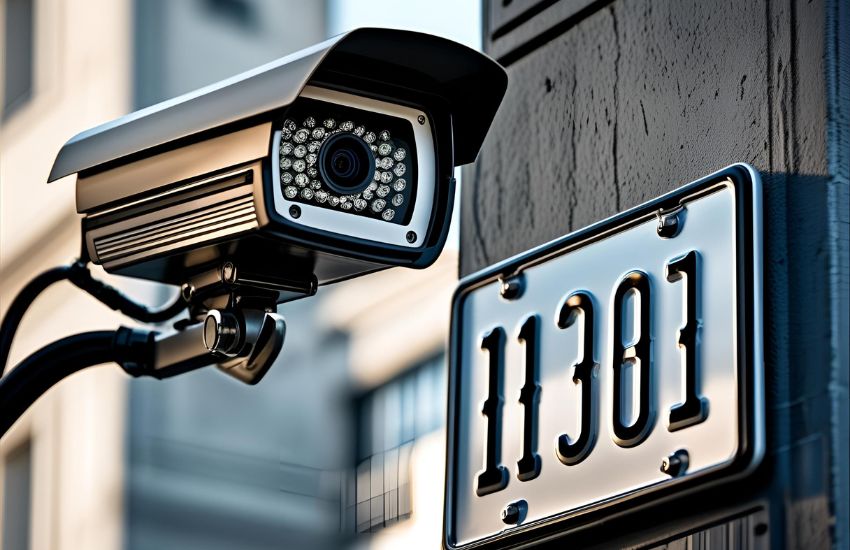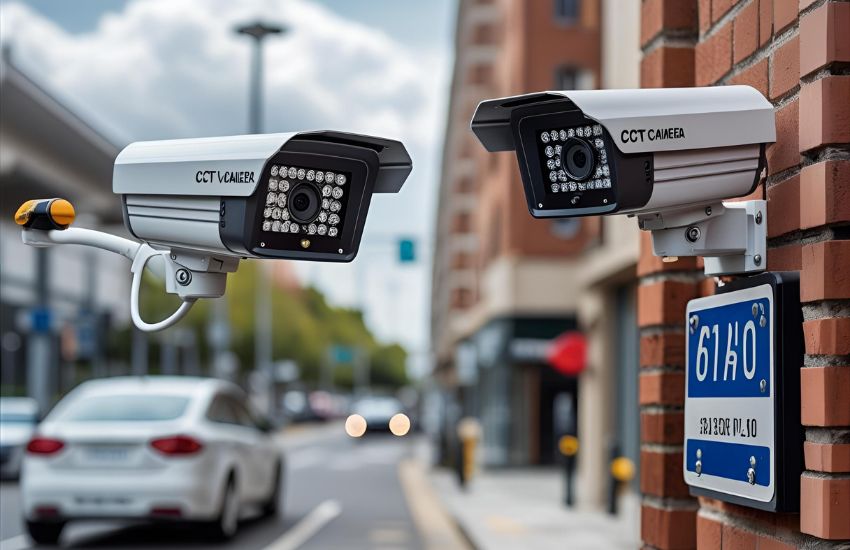Tracking a vehicle’s entry or exit from your premises might seem simple—until you need to identify the license plate number with precision, day or night, in all weather conditions. With rising demand for real-time surveillance and automated identification, selecting between license plate capture and automatic license plate recognition technologies becomes a critical decision in building an effective security camera system.
License Plate Capture (LPC) records clear images of vehicles and plates, ideal for post-event review. Automatic License Plate Recognition (ALPR) goes further by reading and analyzing plate data in real-time for instant alerts and tracking. If you need active monitoring, ALPR is best. For basic documentation, LPC may be sufficient. Choose based on your security goals.
In this blog, you’ll explore how license plate capture and license plate recognition differ in function, performance, and application. You’ll also learn how to decide which option best suits your operational needs, whether you’re considering an LPR camera, license plate capture cameras, or a fully integrated ALPR solution.
Understanding License Plate Capture vs Automatic License Plate Recognition: Key Differences for Your Security Camera Setup

When considering a modern surveillance solution, knowing the distinction between license plate capture and automatic license plate recognition (ALPR) technologies is essential. Each offers a unique approach to identifying and managing vehicle license plate data, but the right choice depends on your specific security requirements.
What is License Plate Capture?
License plate capture refers to the process of using specialized license plate reader cameras to take clear images of passing vehicles’ plates. These cameras are designed to function in various lighting conditions and at different speeds. However, while they capture plate information, they don’t process or analyze it. You or a security team would need to manually review the footage to extract any useful data.
This method works well if your goal is to record and store license plate images for later reference, but it lacks automation for immediate threat detection or access control decisions.
What is Automatic License Plate Recognition?
An automated license plate system, often called an automated license plate reader (ALPR) or ALPR system, takes the process further by using software and optical character recognition to convert captured images into readable data. These systems automatically compare plate numbers with entries in a database, allowing you to detect known threats, flag a stolen vehicle, or grant access to authorized vehicles without delay.
Choosing the Right Technology for Your Setup
When weighing license plate capture vs automatic license plate recognition, the decision hinges on how actively you need to use plate information. If your focus is archival and manual monitoring, capture may suffice. But for real-time response, smart alerts, and access control, an automated license plate reader offers a more proactive solution.
See more about…License Plate Recognition Camera
Choosing the Best Camera for License Plate Recognition: LPR, ALPR, and License Plate Reader Cameras Explained

Choosing the right camera for license plate recognition is critical when accuracy, efficiency, and automation matter most in your security strategy. Whether you’re monitoring high-traffic areas, gated properties, or parking facilities, understanding the capabilities of LPR, ALPR cameras, and license plate reader systems ensures you deploy the most effective solution.
An LPR camera system is built on license plate capture technology, engineered to capture plates in motion, including license plates at night, during high speeds, and under varying weather conditions. Unlike standard surveillance tools, license plate cameras typically feature infrared sensors and narrow-angle lenses to focus precisely on the characters on the license plate for optimal clarity. These cameras also provide consistent performance, ensuring you don’t miss critical details.
What distinguishes LPR technology is its integration with LPR software that can use optical character recognition (OCR) to process and convert images into data. This allows the system to read license plates, extract the characters on the plate, and generate the extracted license plate number without manual input. You can scan license plates, match them to a watchlist, and respond in real time—turning footage into actionable intelligence.
ALPR cameras take this a step further by not only capturing but also processing and identifying license plate information automatically, streamlining workflows and enabling instant alerts. This dual-functionality—license plate capture and recognition—makes ALPR ideal for advanced access control and law enforcement scenarios. The difference between a license plate capture camera and an ALPR unit lies in this automated data extraction and real-time processing.
To support investigations or audits, many systems store video of license plates and can license plates and record time-stamped data for later review. Whether you want to capture plates for documentation or implement a system that actively identifies and logs vehicle data, the best camera choice depends on your specific goals.
See more about…LPR Camera License Plate Detection
How License Plate Capture Cameras and Automated License Plate Readers Improve Security Through Real-Time Data and Database Integration

Enhancing your security system means choosing the right technology to capture a license plate efficiently and accurately. Both license plate capture cameras and automated license plate readers offer distinct advantages, especially when integrated with real-time data processing and centralized databases.
Role of License Plate Capture Cameras in Security
License plate capture cameras, such as bullet cameras and IP cameras, are designed to capture high-quality images of a vehicle’s license plate regardless of lighting or weather conditions. These cameras provide clear visual evidence and serve as the first step in securing your premises. Compared to traditional cameras vs license plate setups, these specialized devices focus specifically on image clarity and speed, ensuring that every plate is captured accurately as vehicles pass.
Automated License Plate Readers and Real-Time Processing
An automated license plate reader goes beyond image capture by using software to instantly analyze license plate data. This allows you to quickly identify vehicles by comparing plate information against existing databases, enabling immediate responses to unauthorized access or flagged vehicles. The integration of automated systems ensures you don’t just collect data—you can act on it in real time.
Benefits of Database Integration for Your Security Setup
When your license plate capture system connects to a comprehensive database, you gain powerful capabilities. This integration helps you track vehicle movements, identify repeat visitors, and receive alerts for stolen or suspicious vehicles. By combining the strengths of bullet cameras, IP cameras, and automated readers, you create a security solution that not only captures plates but also leverages data to protect your property effectively.
See more about…Security Camera with Alarm Light
Conclusion
In conclusion, choosing the right type of camera for license plate recognition is a critical step in strengthening your surveillance strategy. Unlike a standard security camera, an LPR camera is a specialized solution designed to capture and analyze vehicle license data with precision. These cameras are designed to deliver accurate results even in challenging conditions, such as low light or fast-moving traffic.
LPR cameras are typically built with advanced optics and software to record plates, capture license plates on vehicles, and extract the license number with high reliability. Many LPR cameras leverage OCR and AI to detect and interpret plates in real time, providing data you can use instantly. Whether you’re using a surveillance camera for general monitoring or a fully advanced LPR setup, the results are more intelligent and efficient than ever before.
See more about…AI Security Camera
Frequently Asked Questions (License Plate Capture vs Automatic License Plate: Which Technology Suits Your Security Needs)
What is the automatic license plate detection and recognition system?
An automatic license plate detection and recognition system is an advanced technology that uses cameras and artificial intelligence to capture and analyze vehicle license plates. It automatically detects plates from moving or stationary vehicles, extracts alphanumeric details, and converts them into digital data. This system is widely used in traffic monitoring, toll collection, parking management, and law enforcement for enhanced security and efficiency.
What is the difference between LPR camera and ANPR camera?
LPR (License Plate Recognition) and ANPR (Automatic Number Plate Recognition) cameras serve similar purposes but differ slightly. LPR refers broadly to cameras that capture and recognize vehicle license plates. ANPR is a more advanced form, often used in Europe, that not only detects plates but also processes and integrates data for law enforcement, tolling, and traffic management systems.
What are the disadvantages of Automatic Number Plate Recognition?
Automatic Number Plate Recognition (ANPR) has disadvantages such as high installation and maintenance costs, reduced accuracy in poor lighting or adverse weather, and difficulty reading damaged, dirty, or non-standard plates. It also raises privacy concerns as continuous monitoring may lead to misuse of personal data. Additionally, false positives or errors can result in unfair penalties.
What is the camera technology in ANPR?
ANPR (Automatic Number Plate Recognition) cameras use advanced imaging technology, including high-resolution sensors, infrared illumination, and fast shutter speeds to capture clear images of license plates in various lighting and weather conditions. They often integrate optical character recognition (OCR) software, which processes captured images to accurately identify and record vehicle registration numbers in real time.
